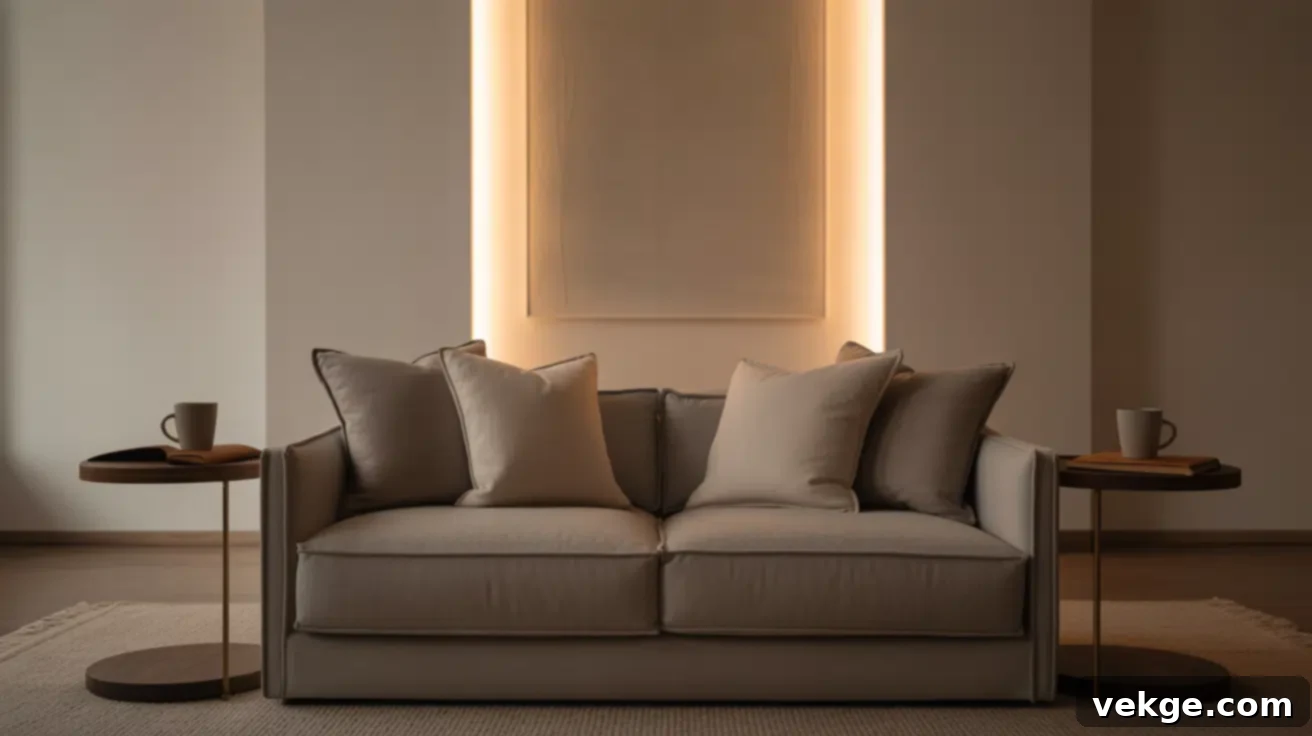The Ultimate Guide to Choosing the Perfect End Table Height for Every Room
Have you ever reached for your coffee only to knock it over because your end table was awkwardly too high or too low? It’s a common mishap, far more frequent than you might imagine, and it highlights a crucial aspect of interior design: the often-overlooked importance of end table height.
The height of your end table isn’t just about aesthetics; it profoundly influences the comfort, functionality, and overall flow of your living space. A well-chosen table seamlessly integrates into your daily routines, making everything from reading a book to setting down a snack effortlessly convenient. Conversely, an ill-fitting table can lead to constant minor frustrations and disrupt the harmony of your room.
In this comprehensive guide, we’ll delve deep into why precise table height matters and equip you with the knowledge to select the perfect size for every area of your home – be it your vibrant living room, serene bedroom, or productive home office. We’ll explore the subtle nuances that dictate ideal heights for various furniture pieces and share expert tips to help you avoid common mistakes. Once you master the art of matching your end tables to your existing furniture, your space will transform into a haven of comfort, ideal for relaxing, entertaining, or simply enjoying a quiet moment.
Ready to make one simple change that promises a significant upgrade to your home’s comfort and style?
Should Your End Table Match the Height of Your Couch?
The relationship between your end table and your sofa is paramount. Many people wonder if their end table should precisely match the height of their couch arms. While there’s no single “correct” answer for every scenario, aligning your end table with your sofa’s arm height is generally the golden rule for achieving optimal comfort and a cohesive look.
When an end table is too tall, you might find yourself craning your neck or lifting your arm uncomfortably high to reach for a drink or remote. If it’s too low, you’ll be leaning down, which can strain your back and make accessibility difficult. Both scenarios detract from the relaxed experience your sofa is meant to provide.
For most living rooms, end tables that are level with or slightly below (within 1-2 inches) your sofa’s arm height work best. This typically translates to tables between 22 and 24 inches tall for standard sofas. This range ensures that items placed on the table are easily accessible without awkward stretching or leaning. It also creates a clean, intentional line across your furniture, contributing to an organized and visually appealing room.
However, your specific needs and how you intend to use the end table might lead to slight variations. For instance, if you plan to place a very tall decorative lamp on your end table, a slightly lower table might be necessary to keep the lampshade at an appropriate eye level. The key is to consider both ergonomics and visual balance to find what works best for your personal space and lifestyle.
Standard End Table Heights for Every Room
To help you navigate the myriad options, here’s a detailed guide to standard end table heights, tailored to different room functions and furniture types. While these are excellent starting points, always remember to measure your specific furniture for the perfect fit.
- Living Room: For sofas and sectionals, end tables ranging from 22 to 26 inches tall are generally ideal. This height range allows for easy reach of drinks, remotes, and books from a seated position, aligning beautifully with the armrests of most standard sofas. Aim for the table surface to be no more than 1-2 inches above or below the sofa arm for optimal comfort and a streamlined aesthetic.
- Bedroom: Nightstands, essentially end tables for your bedroom, should typically align with the top of your mattress. For most beds, this means heights between 24 and 28 inches tall. If you have a particularly high platform bed or a low-profile bed, adjust accordingly to ensure you can comfortably reach your alarm clock, a glass of water, or your reading material without excessive leaning or stretching.
- Home Office: When paired with lounge chairs or reading chairs in a dedicated office nook, end tables around 20 to 24 inches tall are often the most suitable. These chairs frequently have lower or sloped arms, and a slightly lower table ensures comfort and accessibility for a relaxed reading or thinking posture.
- Small Spaces: In compact rooms or alongside armless, minimalist furniture, slightly shorter tables, typically between 18 and 22 inches, can be more effective. Lower tables help to create a sense of openness, preventing the room from feeling cramped or visually cluttered. They also pair well with lower-profile seating often found in smaller living areas.
By adhering to these suggestions, you’ll not only enhance the visual appeal of your rooms but also significantly improve their daily functionality and comfort.
How to Measure Furniture for the Right End Table Height
Achieving the perfect end table height hinges on accurate measurement. It’s a simple step that makes a world of difference in how comfortable and convenient your space feels. Here’s how to do it correctly:
- For Sofas and Chairs: Begin by sitting comfortably in your usual spot on the couch or accent chair. Ensure you’re in a relaxed, natural posture. Using a tape measure or a sturdy ruler, measure the distance from the floor straight up to the top of your sofa arm or the point where your arm naturally rests when you’re seated. This measurement provides your baseline height. For most standard sofas, this will be around 24-26 inches.
- For Beds: If you’re selecting a nightstand, the process is similar. Measure from the floor to the very top of your mattress, including any pillow-top layers. This ensures your nightstand is proportional to your sleeping surface.
- Adding the “Sweet Spot” Increment: Once you have your baseline measurement, a general rule of thumb is to add approximately 1 to 3 inches (or 2.5 to 7.5 centimeters) to this height. This slight elevation above your armrest or mattress top makes reaching for items incredibly easy, as you don’t have to push your arm down or stretch excessively. Imagine effortlessly grabbing your phone, a drink, or turning off a lamp without disrupting your comfort.
Pro Tip: Write down your ideal height measurement and keep it handy when you’re shopping. If possible, ask a friend or family member to assist you with the measuring to ensure greater accuracy, as it can be tricky to hold the tape measure steady and read it simultaneously while seated. A few moments of careful measurement will pay dividends, helping you select a table that feels custom-made for your space and enhances your daily life.
Finding the Right End Table Height for Every Piece of Furniture
Understanding the general guidelines is a great start, but let’s dive into the specifics for different types of furniture, ensuring perfect synergy between your end tables and your existing pieces.
Sofas and Sectionals
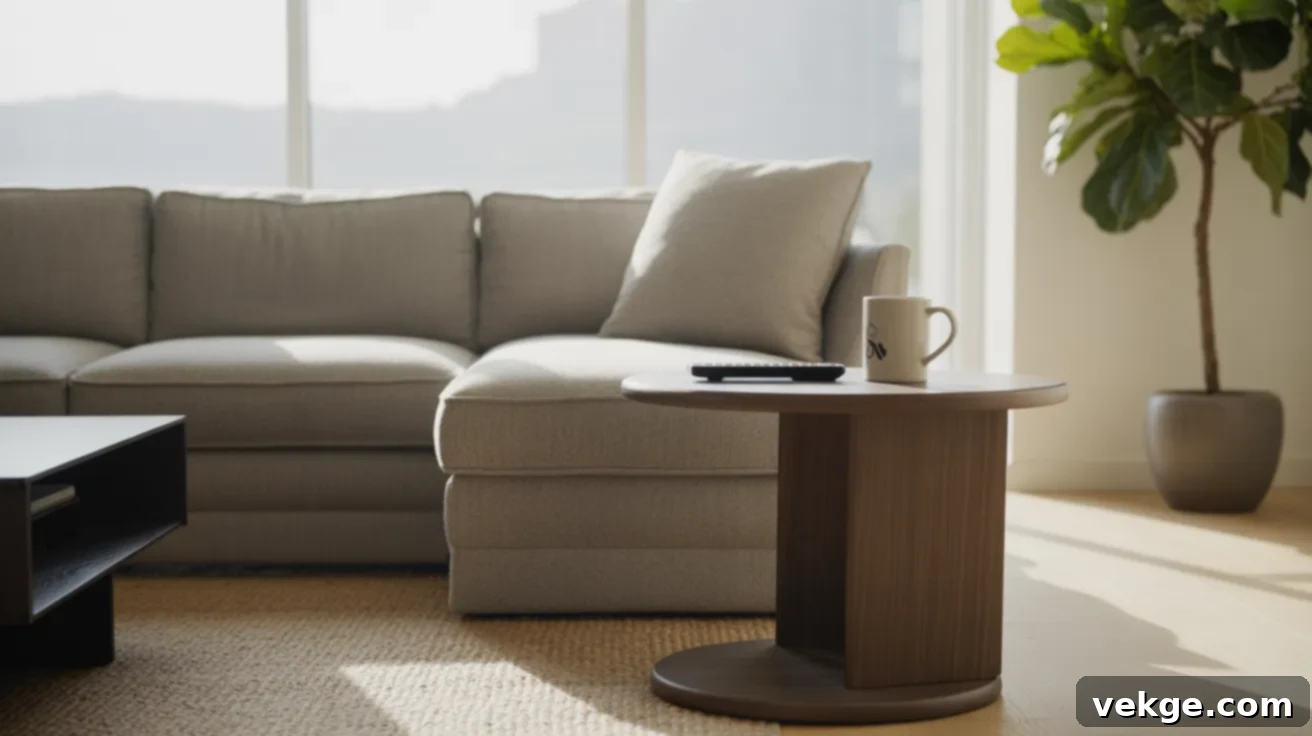
The end table serving your sofa or sectional should be a true partner in comfort. As a rule, select tables that sit within 1-2 inches of your sofa arm height. If your sofa arms are 25 inches tall, an end table around 24-26 inches will offer the best balance and functionality. This precise alignment means you can set down a beverage without looking, confidently reach for the remote, or place a book within easy grasp, all while minimizing the risk of accidental spills or bumps.
Consider the depth of your sofa as well. A deeper sofa might benefit from a slightly larger table top to accommodate reaching, while a shallower sofa might pair better with a more compact table. The goal is seamless interaction, making your living area genuinely inviting and practical.
Platform and High Beds
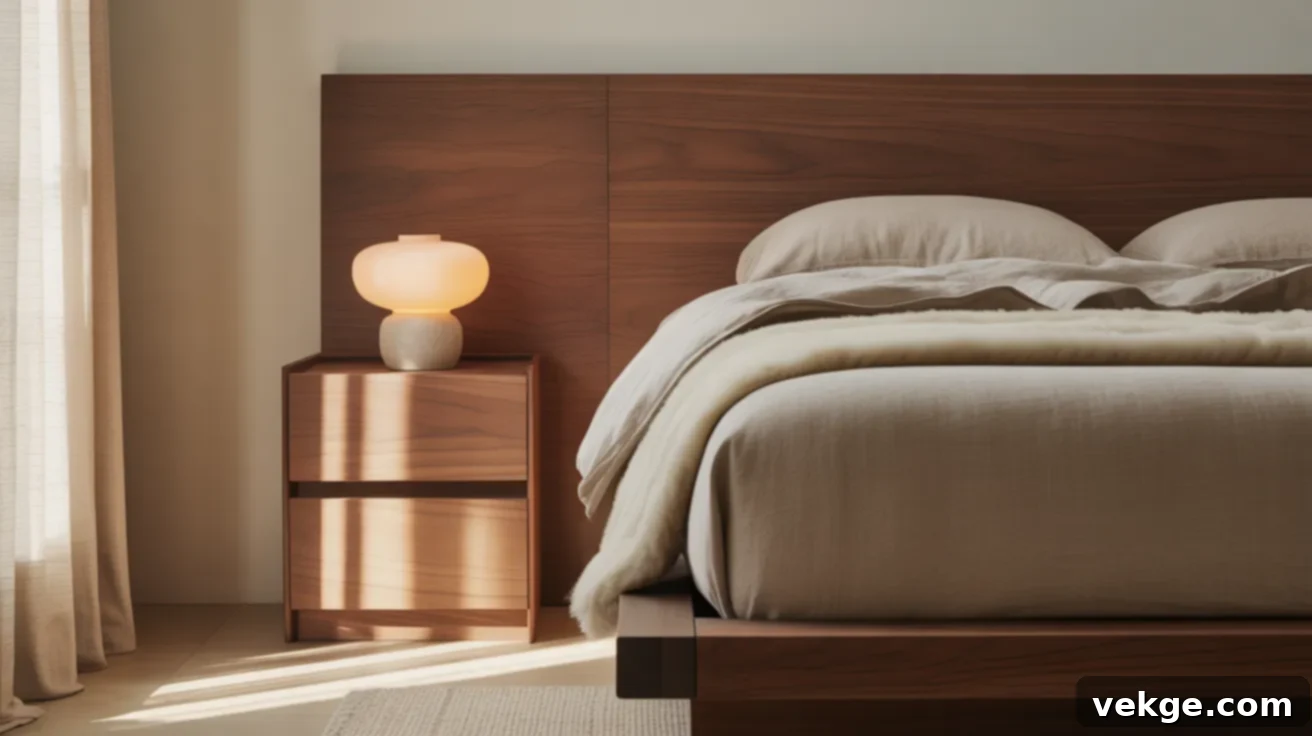
In the bedroom, your nightstand acts as your bedside assistant. For platform beds or any bed with a higher mattress profile, taller nightstands are essential. They reduce the need to reach down awkwardly, preventing strain and making your bedtime routine more comfortable. For example, if your mattress top is 28 inches high, aim for a nightstand around 29-31 inches tall. This slight elevation above the mattress surface makes it easy to grab your phone, adjust your alarm, or turn off your reading lamp without fumbling in the dark.
Beyond height, consider storage. Nightstands with drawers are perfect for stashing personal items, books, or medications, keeping your bedside clutter-free. Open shelves offer quick access to frequently used items. The right height also ensures that the light from your bedside lamp falls perfectly for reading without creating harsh glares.
Accent Chairs & Recliners
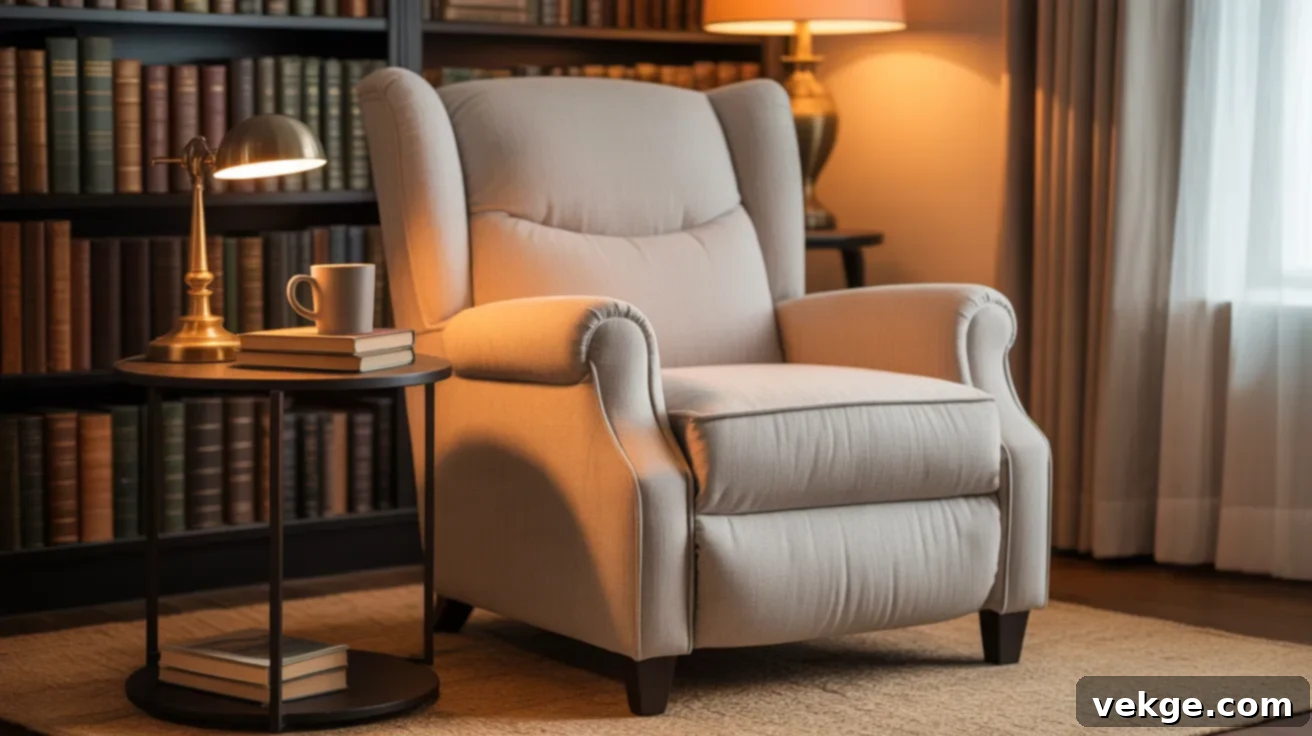
Accent chairs and recliners often feature lower or more sloped armrests compared to sofas. For these seating types, opting for lower end tables, typically between 18 and 22 inches, is key. This height ensures that your drink or book rests at a natural arm position when you’re seated, promoting relaxation. A table that is too tall next to a recliner can actually impede movement, potentially hitting your elbows when you recline or try to stand up. Small, round tables are particularly effective here, as their compact footprint allows them to be tucked closer to the chair, maximizing space while providing essential surface area.
How Table Height Affects Everyday Use and Room Aesthetics
The impact of end table height extends far beyond mere accessibility. It plays a significant role in how useful the table is for specific functions and how it contributes to the overall visual harmony of your room.
For Lamps and Lighting
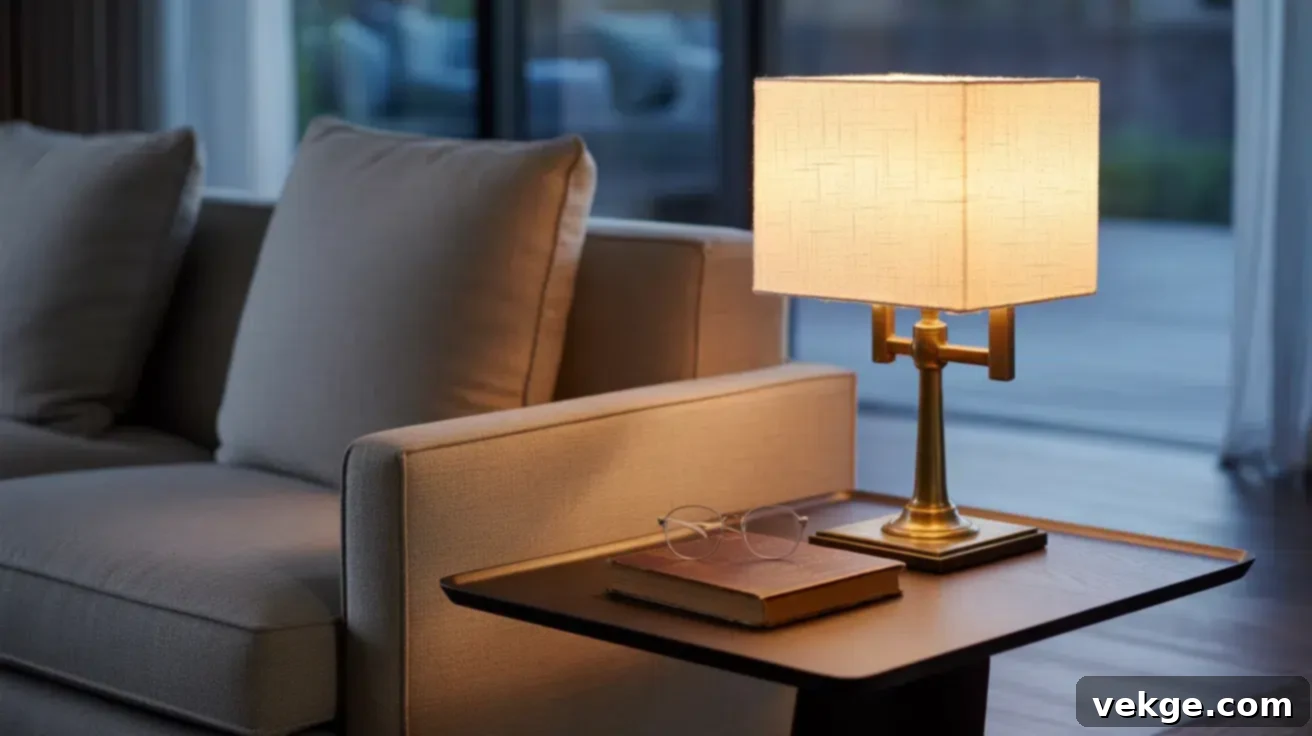
When selecting an end table for a lamp, the primary consideration should be the height of the lamp itself. The general rule for optimal lighting is that the bottom of the lampshade should align with your eye level when you are seated. This prevents the bare bulb from shining directly into your eyes, which can cause glare and discomfort, while also ensuring the light is distributed effectively for reading or ambient illumination.
If you have a shorter lamp, you’ll need a taller end table to achieve this eye-level alignment. Conversely, a taller lamp will require a lower table. This careful pairing ensures that your lighting is not only functional but also contributes to a comfortable and shadow-free environment for activities like reading a book or using your phone.
For Storage and Styling
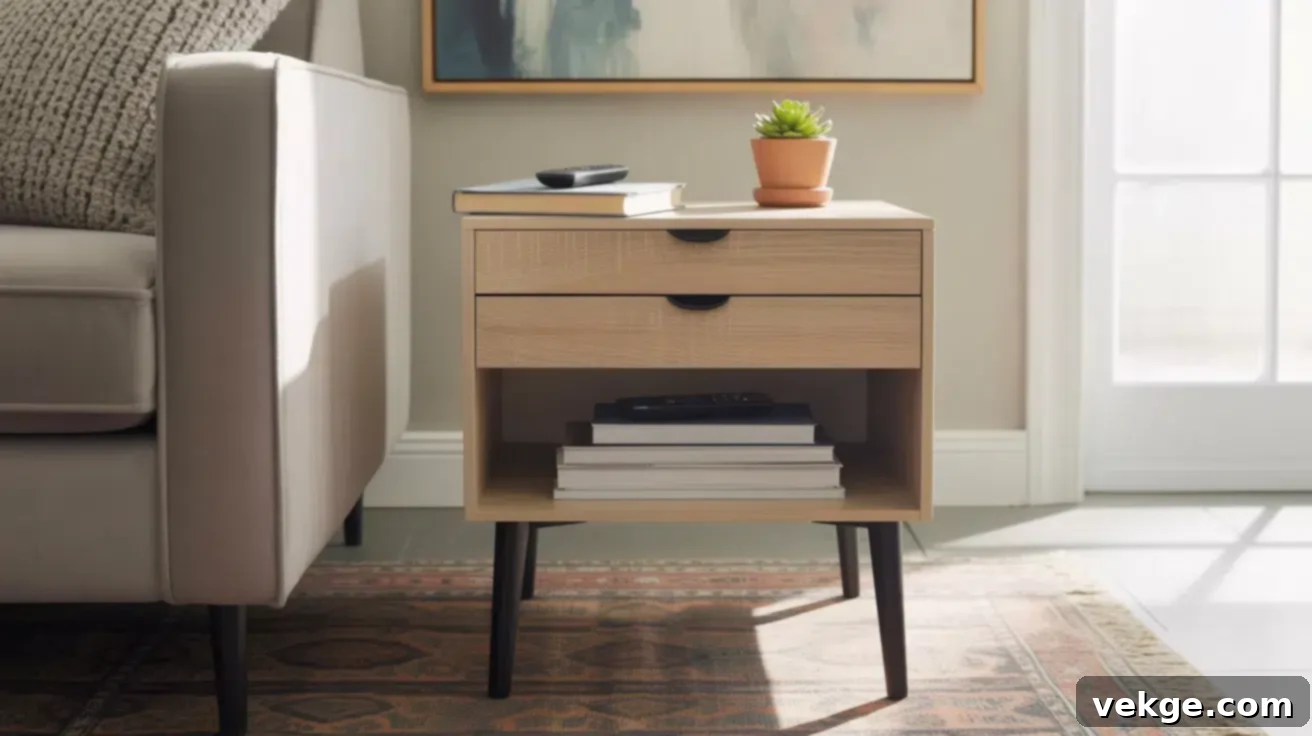
End table height also dictates its potential for storage and how it integrates into your room’s styling. Taller end tables often provide more options for storage, allowing for deeper drawers or additional open shelves underneath the tabletop. This increased vertical space is excellent for discreetly tucking away remote controls, magazines, books, or even gaming accessories, helping to keep your living area tidy and organized.
On the other hand, shorter tables can be advantageous for showcasing other elements of your decor, such as a beautiful rug or striking wall art, as they don’t obstruct the view. In smaller rooms, low tables can make the space feel larger and more open by maintaining more visible wall space above them, contributing to an airy and uncluttered aesthetic. By considering both storage needs and visual impact, you can choose a table height that enhances both functionality and design.
Common Mistakes to Avoid When Choosing End Table Height
While the principles of selecting the right end table height seem straightforward, many common errors can compromise both the look and comfort of your room. Being aware of these pitfalls can save you from costly mistakes and ensure a harmonious living space.
- Tables Too High Above Sofa Arms: This is a frequent error. When end tables sit significantly higher than your sofa’s armrests, they create an awkward reach and disrupt the room’s visual flow. It makes the furniture look mismatched and can cause discomfort when reaching for items.
- How to avoid: Always measure your sofa arm height and aim for an end table that is within 1-2 inches of that measurement, or slightly above, as discussed.
- Inconsistent Table Heights in the Same Room: Having end tables of wildly different heights flanking the same sofa or in close proximity can make a room feel disjointed and un-curated. It creates a random rather than a planned, cohesive appearance.
- How to avoid: Strive for visual consistency. If you have multiple end tables in one area, try to keep their heights similar, especially if they are serving similar functions.
- Improper Table Heights for Lamps: Placing a lamp on a table that is too high or too low can lead to poor light distribution, glare, or inadequate task lighting. It also creates an unbalanced visual effect, where the lamp looks either dwarfed or oversized.
- How to avoid: Ensure the bottom of the lampshade is at eye level when seated. Adjust table height accordingly based on your chosen lamp’s dimensions.
- Ignoring User Height and Ergonomics: Not considering who will use the furniture most often can lead to daily discomfort. Taller individuals might find short tables require excessive bending, while shorter people might struggle to reach items on very high tables.
- How to avoid: Take into account the average height of the primary users of the seating. If there’s a significant height difference, consider adjustable tables or compromise on a height that serves most comfortably.
- Short Tables with Tall Sofas: This combination forces excessive bending and stretching to reach drinks, snacks, or other items. It creates unnecessary strain and diminishes the comfort of your seating area.
- How to avoid: Ensure your end table’s height is proportional to your sofa’s height, especially its seat and armrest. A tall sofa generally requires a taller end table.
- Tables Extending into Walkways: Placing end tables that protrude too far into high-traffic areas creates obstacles. This is not only inconvenient but also poses a safety hazard, leading to bumps and trips.
- How to avoid: Before purchasing, visualize the table’s footprint. Use painter’s tape on the floor to mark out the table’s dimensions to ensure ample clearance for movement.
By being mindful of these common missteps, you can avoid sacrificing comfort or aesthetics for the sake of convenience, ensuring your room functions as beautifully as it looks.
Conclusion
The height of your end table, while seemingly a minor detail, wields significant power in transforming your living space. It’s the silent architect of comfort, dictating the ease with which you interact with your surroundings and contributing immensely to the overall harmony and functionality of your home. When your end table is precisely the right height, every action — from setting down a steaming cup of tea to reaching for a favorite book — becomes effortless, a testament to thoughtful design.
I learned this lesson firsthand. Early in my decorating journey, I once skipped the crucial step of measuring, swayed by an end table’s appealing style. The result? A beautiful piece of furniture that was perpetually just out of reach, leading to constant minor annoyances. That experience taught me the invaluable lesson: aesthetics alone are not enough. Functionality, driven by correct dimensions, is paramount.
Now, before every purchase, I diligently measure against my sofa’s armrest, my bed’s mattress top, or the arm of an accent chair. This simple habit not only prevents future discomfort but also ensures that each piece of furniture contributes to a cohesive, well-considered, and supremely comfortable environment. It makes the room feel “put together” and intuitively easy to use.
So, as you embark on your next furniture quest, remember to pause, take a minute to measure, and thoughtfully consider how you’ll truly use the table. This small investment of time will yield a beautifully comfortable and functional space that you’ll enjoy for years to come. For more insightful tips on creating a simple, smart, and stylish home, be sure to explore the other posts on our blog.
